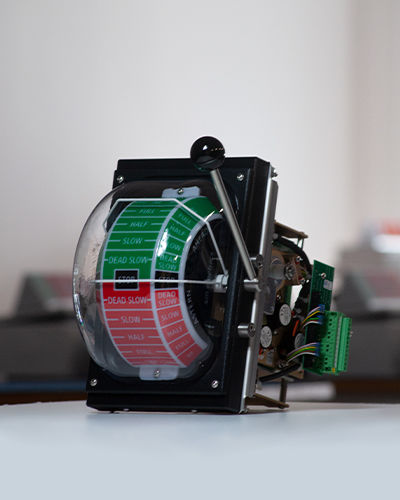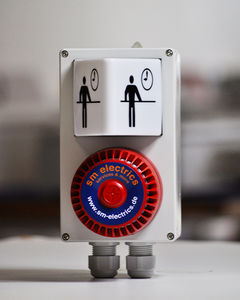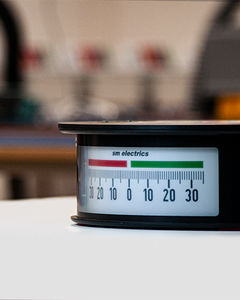
Ship engine room telegraph EOT
Add to favorites
Compare this product
fo_shop_gate_exact_title
Characteristics
- Application domain
- for ships
Description
sm electrics‘ Engine Order Telegraph (EOT) formerly designed and distributed by Stein Sohn respectively Interschalt represent the embodiment of safe and sustained μP controlled human machine interface as a basic part of the connected remote propulsion system.
Type approved by major classification societies the equipment is available for various control application. The highly integrated system is administrating a single interface to the potential propulsion system by high-precision shock resistant potentiometer, contact-free optical current transmitter or other defined physical interface unit. The well established μP controlled “Electrical Shaft” allows a secure Bridge FWD EOT’s remote control by corresponding lever controller located typically on the Bridge Wings and/or Bridge AFT.
The main purpose of sm electrics‘ Engine Order Telegraph system is to generate the desired RPM or pitch value for the connected propulsion remote control system by a sustained and reliable lever – known as well as human machine interface (HMI).
In case the connected propulsion remote control system is disturbed the engine order telegraph system is in use to transfer manoeuvre commands to the engine control room or, if required, directly to the engine room‘s ME local station. The given manoevre command activates an audible alarm as long as the command has been accepted by corresponding operation at the connected participants.
The modular system structure allows to extend the system by wing control units. All telegraphs located on the bridge e.g. bridge FWD, bridge AFT, wing SB, wing PS are connected to each other by a virtual mechanical shaft to make them work synchronously.
Catalogs
*Prices are pre-tax. They exclude delivery charges and customs duties and do not include additional charges for installation or activation options. Prices are indicative only and may vary by country, with changes to the cost of raw materials and exchange rates.












